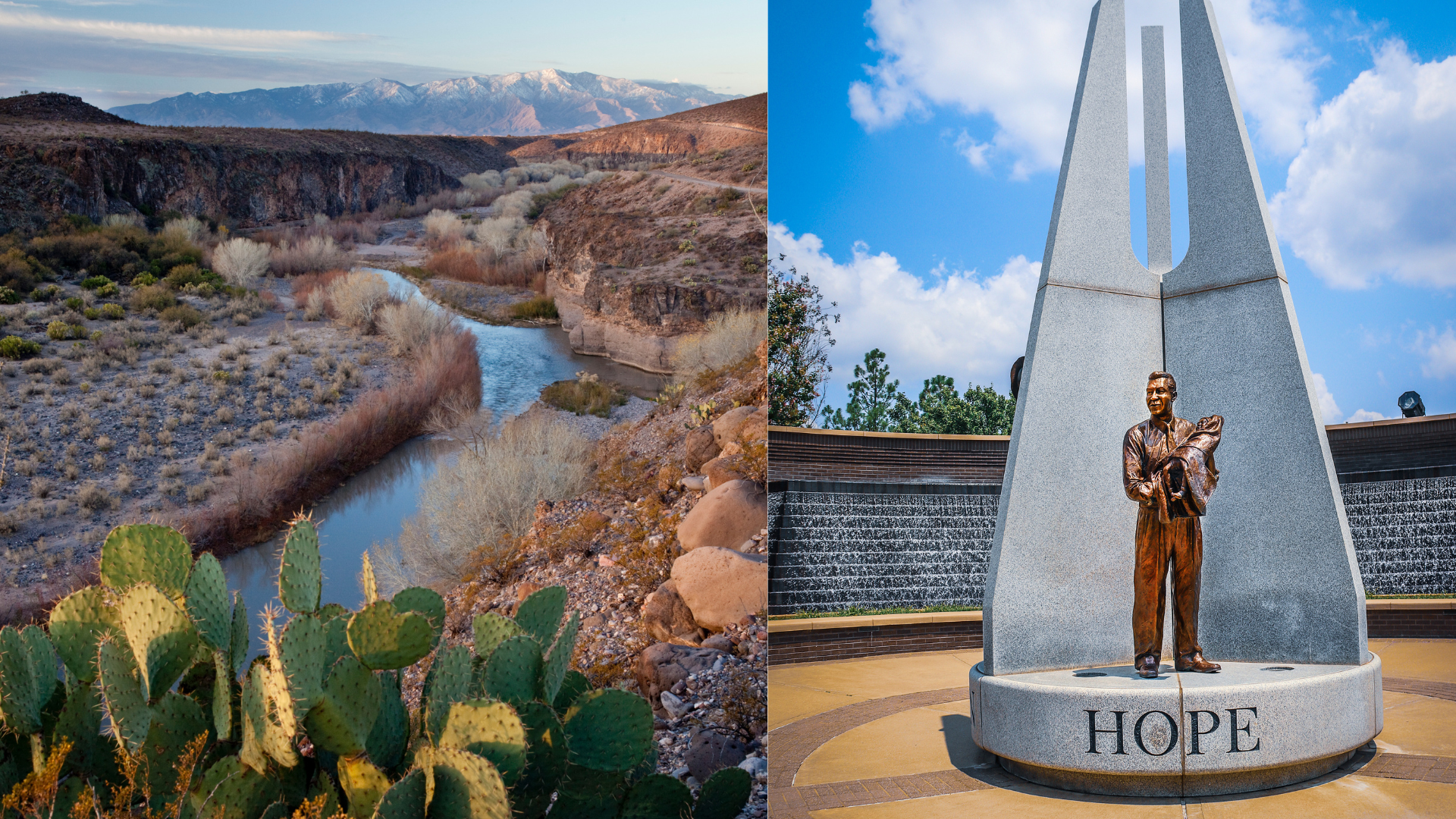
Bills introduced in the US House for the establishment as National Monuments for two historically significant sites: The Great Bend of the Gila and the Greenwood District, or “Black Wall Street.”
Two new House Bills, US House Bill 9257 and House Bill 9159, propose the designation of two new National Monuments: the Great Bend of the Gila in southwestern Arizona and Greenwood District in Tulsa, OK.
The first proposed bill in the House of Representatives aims to establish the Great Bend of the Gila as a National Monument, which is a major step in recognizing and protecting this beautiful land as well as the cultural heritage of Native American Tribes and early Spanish, Mexican, and Euro-American pioneers. The land not only offers natural scenery and wonder but stories of peoples who built lives and communities along the Gila riverbanks for centuries.
The Gila River bends and flows through a valley in the Sonoran Desert of Arizona, nestled between Phoenix and Yuma. The river and valley tell stories of diverse cultures who made the land their home. First were the Patayan and Hohokam tribes followed by early Spaniards and Mexicans. The peoples lived along the winding river and their history survives not only through the land but through petroglyphs and ancient architectural remains. This is the story of not only ancient communities, but of modern-day Americans. The Patayan and Hohokam tribes have grown into over thirteen federally recognized Indian Tribes who can trace their ancestry back to the Great Bend. And the later pioneers who crossed the land established farms, ranches, and mines that grew into towns and cities.
The Great Bend is a beautiful and irreplaceable display of multiple cultures and eras in our country’s history. Although there are protections in place over certain specific sites, the land and artifacts are still vulnerable to vandalism and destruction by off-roading and other activity. If not made into a National Monument, the Great Bend is also under threat of sale to private interests or use for industrial development.
By this bill, the Great Bend of the Gila National Monument would span 376,963 acres of culturally rich land, which would be restored and protected under effective management. The unique cultural heritage – the indigenous archeology, the geologic and scenic resources, the opportunity for education and enjoyment – would be protected as well. To ensure the continued respect and protection of the Indian Tribes, a Tribal Commission would be established to provide guidance and recommendation over the land, and Tribes would be able to continue to use the land for its traditional, intended purposes.
This bill is essential to protect this land, its history, and all that it has to offer to current and future generations of Americans.
The second bill proposes a National Monument for the Greenwood district of Tulsa, OK. Historically referred to as, “Black Wall Street,” the site was the center of a 1921 race riot, one of the worst in American history.
Before the riots that destroyed the town, Greenwood was one of the most affluent black neighborhoods in America at the time. Due to segregation and Jim Crow laws, black Americans were encouraged to spend their money in places where they felt welcome, keeping money within black communities like Greenwood and allowing it to prosper. However, the success of Greenwood caused great hatred and resentment among the white neighborhoods, which eventually boiled over into a terrorist massacre.
The massacre started with the arrest of Dick Rowland, a black shoe shiner incorrectly accused of sexual assault. While detained at the local courthouse, a mob gathered outside and called for his lynching. Sheriff William M. McCullough refused to turn over Rowland, angering the crowd. Dozens of black World War I veterans showed up with arms to defend Rowland and the Sheriff, prompting hundreds of the white crowd to do the same. Eventually, shots were fired, beginning Tulsa’s race riot.
The white crowd killed dozens of innocent black men and women and burned down 35 city blocks of the Greenwood district, turning away firefighters at gunpoint. Estimates as to the death toll vary between 50-300 deaths, with the majority being black. Around 10,000 were left homeless and 200 businesses were destroyed. This was an attack not only on black people, but on black success and culture.
The proposed monument would preserve much of the Greenwood district and the legacy of the black citizens who made it flourish, despite the many challenges they faced. It would serve as a reminder of a dark moment in American history and provide opportunities from which to learn as a society. Finally, it would enshrine the often-unrecognized wealth and success of the primarily black community and businesses that thrived in Greenwood.